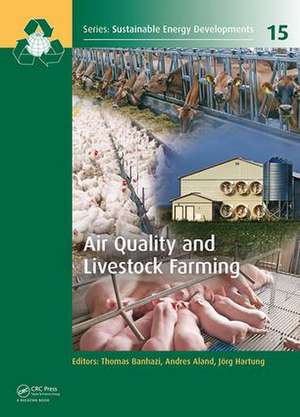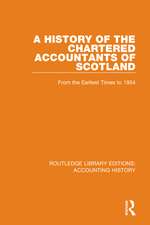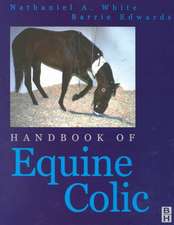Air Quality and Livestock Farming: Sustainable Energy Developments
Editat de Thomas Banhazi, Andres Aland, Jörg Hartungen Limba Engleză Hardback – 7 iun 2018
In this book, key aspects of agricultural air quality, such as monitoring, managing and reducing airborne pollutants in and around livestock facilities are reviewed.
Features:
Preț: 1190.70 lei
Preț vechi: 1673.27 lei
-29% Nou
Puncte Express: 1786
Preț estimativ în valută:
227.91€ • 247.65$ • 191.57£
227.91€ • 247.65$ • 191.57£
Carte tipărită la comandă
Livrare economică 21 aprilie-05 mai
Preluare comenzi: 021 569.72.76
Specificații
ISBN-13: 9781138027039
ISBN-10: 1138027030
Pagini: 412
Dimensiuni: 174 x 246 x 28 mm
Greutate: 0.95 kg
Ediția:1
Editura: CRC Press
Colecția CRC Press
Seria Sustainable Energy Developments
ISBN-10: 1138027030
Pagini: 412
Dimensiuni: 174 x 246 x 28 mm
Greutate: 0.95 kg
Ediția:1
Editura: CRC Press
Colecția CRC Press
Seria Sustainable Energy Developments
Public țintă
ProfessionalCuprins
Section I: Characteristics and sources of different airborne pollutants
Section II: Measurement issues
Section III: Pollutant levels encountered in livestock buildings
Section IV: Effects of sub-optimal air quality on workers, animals and the environment
Section V: Reduction methods Controlling internal concentrations and emissions from the animal buildings
Section VI: Reduction methods and technologies for controlling airborne pollutants
Section II: Measurement issues
Section III: Pollutant levels encountered in livestock buildings
Section IV: Effects of sub-optimal air quality on workers, animals and the environment
Section V: Reduction methods Controlling internal concentrations and emissions from the animal buildings
Section VI: Reduction methods and technologies for controlling airborne pollutants
Notă biografică
Associate Professor Thomas Banhazi is currently a Lecturer and Principal Scientist at University of Southern Queensland (USQ) responsible for the delivery of a number of agriculture related courses in addition to supervising a large number of post-graduate students. Associate Professor Banhazi has published in excess of 200 book chapters, journal and international conference papers and has been involved in approximately 40 research projects both in Europe and Australia funded by various government agencies and farmer organisations. He has successfully patented a number of innovative technologies in the US, Australia and Europe and actively engaged in the commercialisation of the patented inventions via his commercialisation companies. His expertise is mainly related to Precision Livestock Farming applications and environmental assessment methods. However, his research interests also include thermal and aerial environment of livestock buildings, the effect of airborne pollutants on the health of animals and workers, emission abatement and livestock waste management technologies.
Associate professor Andres Aland is a Lecturer in Animal Health that involves both teaching and scientific activities at the Chair of Veterinary Bio- and Population Medicine at the Estonian University of Life Sciences. He has supervised a number of post-graduate students and published a large number of journal articles, conference papers and book chapters, including two textbooks published by the Wageningen Academic Publishers. Associate professor Aland has been involved in approximately 10 large research projects both in Estonia and Europe, funded by various governmental or European agencies. His expertise is mainly related to the areas of animal welfare and herd health monitoring in different production systems; environmental risks in production animal housing and preventive veterinary medicine. He is the Vice President of the International Society for Animal Hygiene and he is a member of numerous academic bodies nationally and internationally. Associate professor Aland has been the recipient of several national awards for his work as researcher, lecturer and post-graduate supervisor.
Jörg Hartung (Dr. med. vet., Dr. med. vet. habil, Dr. h. c.) is veterinarian and Professor of Animal Hygiene, Husbandry and Welfare Science. He has been awarded an Honorary Doctorate by the Swedish University of Agricultural Sciences for his scientific research on animal health/welfare and the effects of air pollutants on animals, humans and the environment. He was the Director of the Institute for Animal Hygiene, Welfare and Livestock Behaviour of the University of Veterinary Medicine Hannover, Germany for 20 years and served for 2 years as group leader at the Silsoe Research Institute, UK. His experience covers more than 35 years teaching and research in veterinary medicine and animal production on wide ranging topics such as (1) animal hygiene (2) animal welfare and health, (3) environmental protection and (4) occupational health aspects of farming. He is the President of the International Society for Animal Hygiene, chairman of the Committee for Animal Welfare in the Federal Ministry for Agriculture, Germany, member of the Committee "Impact of Air Pollutants on Farm Animals" in German Engineers Association and member of the working group "Biological Risks at Workplace Agriculture", Germany. Currently he is an Emeritus Professor and since 2014 guest-Professor at University Sao Paulo (USP), Brazil.
Associate professor Andres Aland is a Lecturer in Animal Health that involves both teaching and scientific activities at the Chair of Veterinary Bio- and Population Medicine at the Estonian University of Life Sciences. He has supervised a number of post-graduate students and published a large number of journal articles, conference papers and book chapters, including two textbooks published by the Wageningen Academic Publishers. Associate professor Aland has been involved in approximately 10 large research projects both in Estonia and Europe, funded by various governmental or European agencies. His expertise is mainly related to the areas of animal welfare and herd health monitoring in different production systems; environmental risks in production animal housing and preventive veterinary medicine. He is the Vice President of the International Society for Animal Hygiene and he is a member of numerous academic bodies nationally and internationally. Associate professor Aland has been the recipient of several national awards for his work as researcher, lecturer and post-graduate supervisor.
Jörg Hartung (Dr. med. vet., Dr. med. vet. habil, Dr. h. c.) is veterinarian and Professor of Animal Hygiene, Husbandry and Welfare Science. He has been awarded an Honorary Doctorate by the Swedish University of Agricultural Sciences for his scientific research on animal health/welfare and the effects of air pollutants on animals, humans and the environment. He was the Director of the Institute for Animal Hygiene, Welfare and Livestock Behaviour of the University of Veterinary Medicine Hannover, Germany for 20 years and served for 2 years as group leader at the Silsoe Research Institute, UK. His experience covers more than 35 years teaching and research in veterinary medicine and animal production on wide ranging topics such as (1) animal hygiene (2) animal welfare and health, (3) environmental protection and (4) occupational health aspects of farming. He is the President of the International Society for Animal Hygiene, chairman of the Committee for Animal Welfare in the Federal Ministry for Agriculture, Germany, member of the Committee "Impact of Air Pollutants on Farm Animals" in German Engineers Association and member of the working group "Biological Risks at Workplace Agriculture", Germany. Currently he is an Emeritus Professor and since 2014 guest-Professor at University Sao Paulo (USP), Brazil.
Descriere
Air quality has a direct influence on health, welfare and production performance of livestock. Long term exposure to particulates in livestock buildings might also affect the respiratory health of farm workers. Air pollutants emitted from livestock buildings can reduce air, water and soil quality and can potentially undermine the health of nearby residents. In this book we reviewed key aspects of agricultural air quality, such as monitoring, managing and reducing airborne pollutants in and around livestock facilities. We hope that this book will be useful for farming professionals, academics, students, policy makers, business leaders, regulatory bodies and agricultural consultants.















